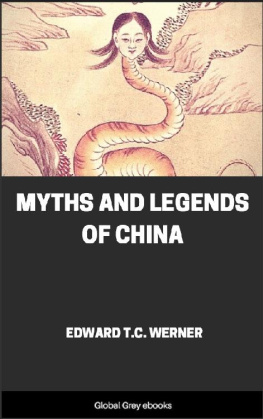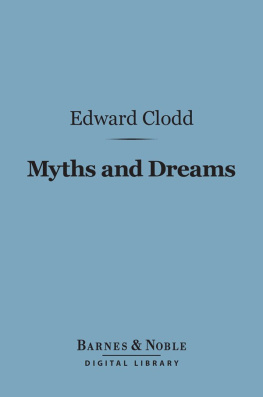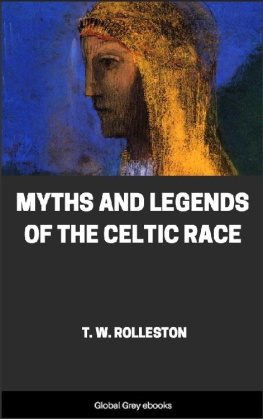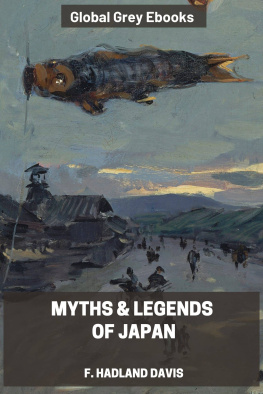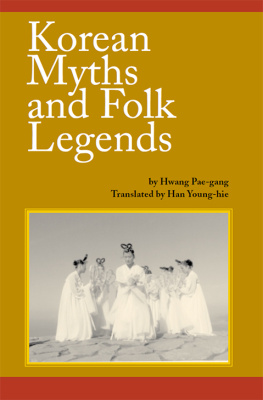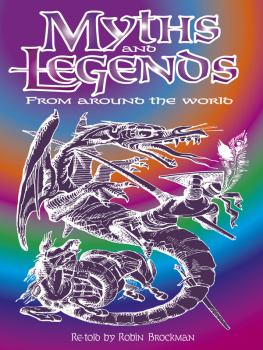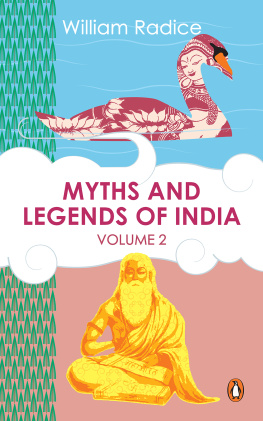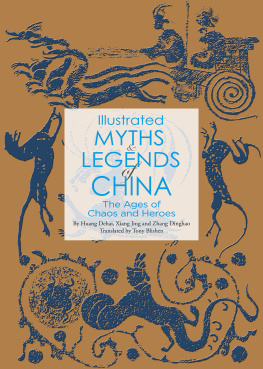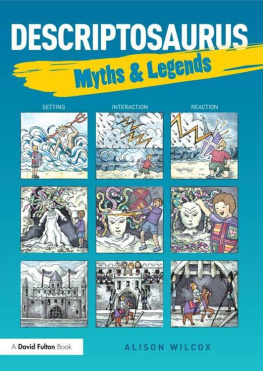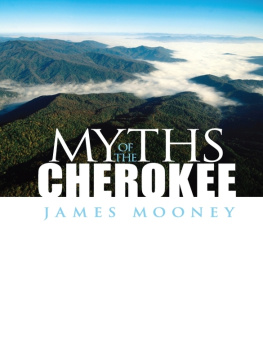Edward T.C. Werner - Myths and Legends of China
Here you can read online Edward T.C. Werner - Myths and Legends of China full text of the book (entire story) in english for free. Download pdf and epub, get meaning, cover and reviews about this ebook. year: 2018, publisher: Global Grey ebooks, genre: Romance novel. Description of the work, (preface) as well as reviews are available. Best literature library LitArk.com created for fans of good reading and offers a wide selection of genres:
Romance novel
Science fiction
Adventure
Detective
Science
History
Home and family
Prose
Art
Politics
Computer
Non-fiction
Religion
Business
Children
Humor
Choose a favorite category and find really read worthwhile books. Enjoy immersion in the world of imagination, feel the emotions of the characters or learn something new for yourself, make an fascinating discovery.
- Book:Myths and Legends of China
- Author:
- Publisher:Global Grey ebooks
- Genre:
- Year:2018
- Rating:5 / 5
- Favourites:Add to favourites
- Your mark:
- 100
- 1
- 2
- 3
- 4
- 5
Myths and Legends of China: summary, description and annotation
We offer to read an annotation, description, summary or preface (depends on what the author of the book "Myths and Legends of China" wrote himself). If you haven't found the necessary information about the book — write in the comments, we will try to find it.
Myths and Legends of China — read online for free the complete book (whole text) full work
Below is the text of the book, divided by pages. System saving the place of the last page read, allows you to conveniently read the book "Myths and Legends of China" online for free, without having to search again every time where you left off. Put a bookmark, and you can go to the page where you finished reading at any time.
Font size:
Interval:
Bookmark:
MYTHS AND LEGENDS
OF CHINA
BY
EDWARD T.C. WERNER
With Thirty-two Illustrations In Colours By Chinese Artists
1922
Myths and Legends of China by Edward T.C. Werner.
This edition was created and published by Global Grey
GlobalGrey 2018

globalgreyebooks.com
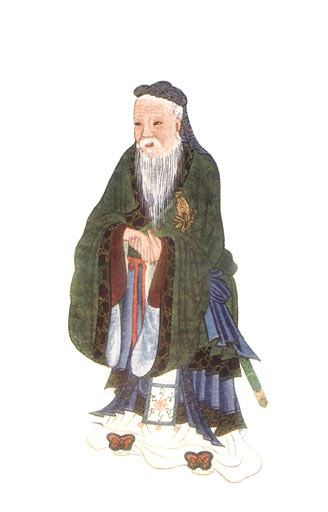
Frontispiece; Confucius: Teacher and Philosopher
The chief literary sources of Chinese myths are the Li tai shn hsien tung chien, in thirty-two volumes, the Shn hsien lieh chuan, in eight volumes, the Fng shn yen i, in eight volumes, and the Sou shn chi, in ten volumes. In writing the following pages I have translated or paraphrased largely from these works. I have also consulted and at times quoted from the excellent volumes on Chinese Superstitions by Pre Henri Dor, comprised in the valuable series Varits Sinologiques, published by the Catholic Mission Press at Shanghai. The native works contained in the Ss Ku Chan Shu, one of the few public libraries in Peking, have proved useful for purposes of reference. My heartiest thanks are due to my good friend Mr Mu Hseh-hsn, a scholar of wide learning and generous disposition, for having kindly allowed me to use his very large and useful library of Chinese books. The late Dr G.E. Morrison also, until he sold it to a Japanese baron, was good enough to let me consult his extensive collection of foreign works relating to China whenever I wished, but owing to the fact that so very little work has been done in Chinese mythology by Western writers I found it better in dealing with this subject to go direct to the original Chinese texts. I am indebted to Professor H.A. Giles, and to his publishers, Messrs Kelly and Walsh, Shanghai, for permission to reprint from Strange Stories from a Chinese Studio the fox legends given in Chapter XV.
This is, so far as I know, the only monograph on Chinese mythology in any non-Chinese language. Nor do the native works include any scientific analysis or philosophical treatment of their myths.
My aim, after summarizing the sociology of the Chinese as a prerequisite to the understanding of their ideas and sentiments, and dealing as fully as possible, consistently with limitations of space (limitations which have necessitated the presentation of a very large and intricate topic in a highly compressed form), with the philosophy of the subject, has been to set forth in English dress those myths which may be regarded as the accredited representatives of Chinese mythologythose which live in the minds of the people and are referred to most frequently in their literature, not those which are merely diverting without being typical or instructivein short, a true, not a distorted image.
Edward Theodore Chalmers Werner
Peking
February 1922
Racial Origin
In spite of much research and conjecture, the origin of the Chinese people remains undetermined. We do not know who they were nor whence they came. Such evidence as there is points to their immigration from elsewhere; the Chinese themselves have a tradition of a Western origin. The first picture we have of their actual history shows us, not a people behaving as if long settled in a land which was their home and that of their forefathers, but an alien race fighting with wild beasts, clearing dense forests, and driving back the aboriginal inhabitants.
Setting aside several theories (including the one that the Chinese are autochthonous and their civilization indigenous) now regarded by the best authorities as untenable, the researches of sinologists seem to indicate an origin (1) in early Akkadia; or (2) in Khotan, the Tarim valley (generally what is now known as Eastern Turkestan), or the Kun-lun Mountains (concerning which more presently). The second hypothesis may relate only to a sojourn of longer or shorter duration on the way from Akkadia to the ultimate settlement in China, especially since the Khotan civilization has been shown to have been imported from the Punjab in the third century B.C. The fact that serious mistakes have been made regarding the identifications of early Chinese rulers with Babylonian kings, and of the Chinese po-hsing (Cantonese bak-sing) people with the Bak Sing or Bak tribes, does not exclude the possibility of an Akkadian origin. But in either case the immigration into China was probably gradual, and may have taken the route from Western or Central Asia direct to the banks of the Yellow River, or may possibly have followed that to the south-east through Burma and then to the north-east through what is now Chinathe settlement of the latter country having thus spread from south-west to north-east, or in a north-easterly direction along the Yangtz River, and so north, instead of, as is generally supposed, from north to south.
Southern Origin Improbable
But this latter route would present many difficulties; it would seem to have been put forward merely as ancillary to the theory that the Chinese originated in the Indo-Chinese peninsula. This theory is based upon the assumptions that the ancient Chinese ideograms include representations of tropical animals and plants; that the oldest and purest forms of the language are found in the south; and that the Chinese and the Indo-Chinese groups of languages are both tonal. But all of these facts or alleged facts are as easily or better accounted for by the supposition that the Chinese arrived from the north or north-west in successive waves of migration, the later arrivals pushing the earlier farther and farther toward the south, so that the oldest and purest forms of Chinese would be found just where they are, the tonal languages of the Indo-Chinese peninsula being in that case regarded as the languages of the vanguard of the migration. Also, the ideograms referred to represent animals and plants of the temperate zone rather than of the tropics, but even if it could be shown, which it cannot, that these animals and plants now belong exclusively to the tropics, that would be no proof of the tropical origin of the Chinese, for in the earliest times the climate of North China was much milder than it is now, and animals such as tigers and elephants existed in the dense jungles which are later found only in more southern latitudes.
Expansion of Races from North to South
The theory of a southern origin (to which a further serious objection will be stated presently) implies a gradual infiltration of Chinese immigrants through South or Mid-China (as above indicated) toward the north, but there is little doubt that the movement of the races has been from north to south and not vice versa. In what are now the provinces of Western Kansu and Sschuan there lived a people related to the Chinese (as proved by the study of Indo-Chinese comparative philology) who moved into the present territory of Tibet and are known as Tibetans; in what is now the province of Ynnan were the Shan or Ai-lao (modern Laos), who, forced by Mongol invasions, emigrated to the peninsula in the south and became the Siamese; and in Indo-China, not related to the Chinese, were the Annamese, Khmer, Mon, Khasi, Colarains (whose remnants are dispersed over the hill tracts of Central India), and other tribes, extending in prehistoric times into Southern China, but subsequently driven back by the expansion of the Chinese in that direction.
Arrival of the Chinese in China
Taking into consideration all the existing evidence, the objections to all other theories of the origin of the Chinese seem to be greater than any yet raised to the theory that immigrants from the Tarim valley or beyond (
Next pageFont size:
Interval:
Bookmark:
Similar books «Myths and Legends of China»
Look at similar books to Myths and Legends of China. We have selected literature similar in name and meaning in the hope of providing readers with more options to find new, interesting, not yet read works.
Discussion, reviews of the book Myths and Legends of China and just readers' own opinions. Leave your comments, write what you think about the work, its meaning or the main characters. Specify what exactly you liked and what you didn't like, and why you think so.

